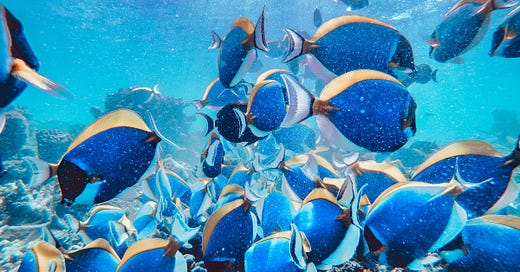#researchBlog
Water can evoke a myriad of emotions in humans. The habitual patterns of thinking and feeling about water and wellbeing are almost inherently positive. White noise streams or cold-water immersion are recognized as emotionally positive and health-boosting. Usually, less attention is paid to the investigation of positive emotions, as they are less differentiated (Ellsworth & Smith, 1988) and do not demand quick action tendencies, such as fight-or-flight response to fear. At the same time, positive emotions are arguably more impactful on cognitive processes (e.g., attention) and offer broader action repertoire in the long run (Fredrickson, 1998).
What pertinent is that positive emotions are often key to harmonious human-nature relationships, sustainable thinking and behaviour (Tapia-Fonlemm et al., 2017). When language influences ecosystems – in this case, an aquatic ecosystem – it becomes the focus of ecolinguistics (Alexander & Stibbe, 2014). Here, recent studies explored harmonious discourses (Huang & Zhao, 2021) to identify what ‘stories’ (Stibbe, 2015) people tell about the world. Language and cognition contribute to the creation of ecological reality where emotions are often omnipresent.
Drawing on these considerations, a mixed-method research design was adopted to explore cognitive, linguistic, and psychological levels of water experience by assessing the following:
- How do emotional states influence creation of water metaphors in a sustainable wellbeing context?
- What types of water metaphors can be considered as a source for sustainable thinking?
To this end, a corpus of web articles about water, emotions, well-being and sustainability has been compiled using a tool BootCaT, followed by a qualitative analysis with MAXQDA:
(a) Conceptual metaphor theory (Lakoff & Johnson, 1980) is used to explore metaphorical patterns of water conceptualization. Here, The Dynamic Discourse Approach (Cameron, 2010) is taken into account to analyse the role of discourse and context (Kövecses, 2015, 2020) in metaphor creation;
(b) A psychological perspective is considered when exploring emotional states associated with water. First, based on Plutchik classification of emotions (1980), I identify the levels of emotional intensity (strong/weak) and complexity (basic/compound). Second, approaching emotional states as cognitively appraised conscious experiences (Scherer, 2009), further study of states associated with water (e.g., calm) is pursued.
The preliminary analysis output revealed two contextual themes in the corpus: (1) mental health benefits and (2) influence of a relaxing property of water. The prominent source domains for the target domain of WATER are MEDICINE (“sea water prescribed”), FORCE (“water turned you into high-functioning Zen ninja”), and UNIFIER (“switch gears from ‘I’ orientation to ‘We’). The latter was identified in discourses about cleaning the ocean from plastic and similar initiatives. WATER IS MEDICINE evoked basic emotions of joy and “bliss out”, whereas the states of being mindful and, interestingly, creative and innovative, were linked with the metaphor WATER IS A UNIFIER. The degree of emotional intensity was slightly heightened (“more compassionate”, “soft fascination”). Two exceptions with high intensity have been found with happiness (“the happiest by the sea”).
Keywords: water, metaphor, emotion, cognitive semantics, ecolinguistics ࿔
* Article originally posted






